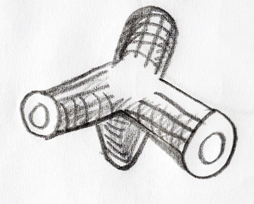



















































When I was seventeen, I was given a big cardboard box with unexposed photo rolls. Thirty glossy little boxes, yellow, gold and black, emanating a peculiar dull sour smell of vinegar. Thirty-five millimeter, black and white acetate film, the sell by date just expired, yet these photographic rolls of film had a purpose, a key element of a master plan.
Black atomic like mushroom clouds soared gently upwards, dispersing tufts of black strings and dark clouds. I am looking at black ink dispersing in water.
The setup of my micro experiment is simple, you need a glass of cold water and ink. Gently release a drop of cool black ink under the surface of the water with a pipette and watch how the ink unfolds in gentle swirls towards the bottom of the glass. It is like a plume of smoke floating through the air.
Later on, in my experimentation, when I had improvised a little photo studio with a desk lamp, I found a method of getting the ink to settle at the bottom of the glass and I would warm up a small area of the glass with a lighter. The ink heated up, and then in what looked like a micro nuclear explosion the black liquid would billow out in a magnificent big swirling mushroom cloud. Through the lens of a reflex camera I observed how the inky clouds slowly climbed up and unfolded in magical forms and shapes. For about two weeks, each day after school, I set up my modest laboratory photo studio and captured those spectacular mushrooms and dramatic swirling eddies on the photo film.
An experienced photographer would have told me that the dull smell of vinegar was a sign of acetate film base degradation, and that the film had more than passed its use by date. However, my mind was fixed on the majestic movement of the flow of fluids (liquids and gases). Till this day I am fascinated by the motion of steam being expelled from vents in large puffs or by the clouds appearing and disappearing over the skyline. Videos, computer simulations, drawing, graphics, photography, 3D models and paintings are ways for me to observe the magnificent world of the flow of fluids.
K_Van